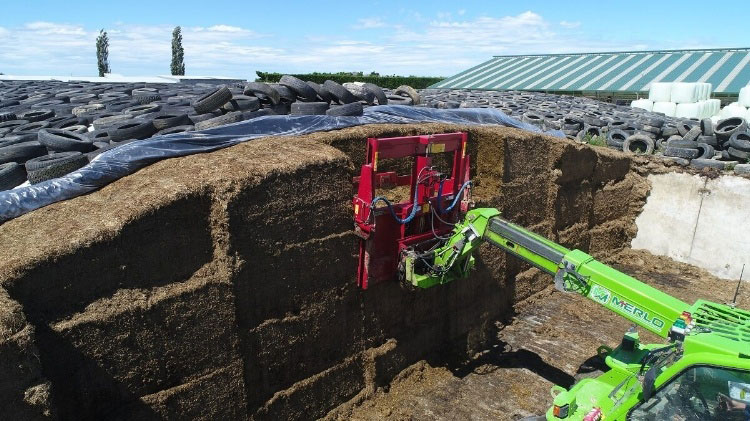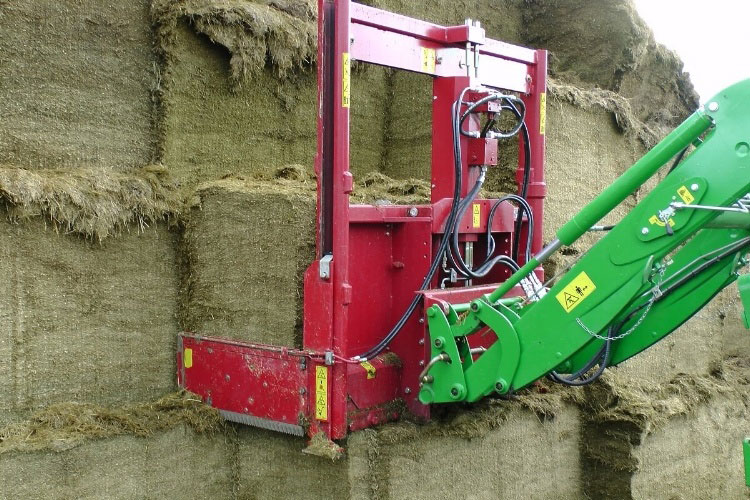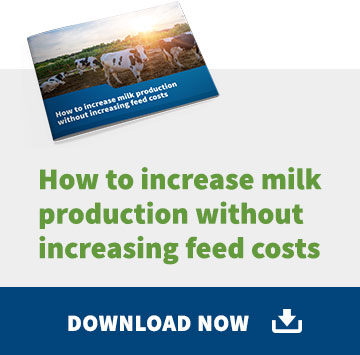Having healthy silage is a key element to having healthy cows, and of course we know that the healthier your cows are, the better the quality of their milk production. So how do you make sure your silage is top quality, and isn’t running the risk of spoiling? The key is better stack management, or as summarised in this simplified equation: less spoilage = better quality silage = more milk in the vats.
Implementing a more effective system for managing your stack face will minimise losses and reduce the risk of problems in your cows. Put simply, the better your management, the more successful your farming operation will be.
In this article we look at the features of healthy silage and how to improve your stack face. This includes, reducing spoilage, as well as cutting, calculating and harvesting. We also touch on the benefits of using a silage block cutter, which can help you use and manage your silage stack more efficiently, while almost eliminating waste.
Silage is a great source of energy and protein for cows but as you’re sure to be aware, when it’s exposed to air, it’s also a breeding ground for spoilage organisms like yeasts, moulds and unhealthy bacteria. To reduce wastage, and the risk of health problems in your cows, and give your silage the best chance of supporting a high milk yield, it needs to be well compacted, with a well managed stack face. As our simplified equation above summarises, the less decay, the better your quality of silage and ultimately, the more milk in your vats.
Depending on the mixture of fermentation products, silage can spoil quickly when exposed to air during feedout. So the same goes when in storage – if your stacks crumble away freely at the face, they’re at higher risk.
By reducing spoilage in your stack, you’re also reducing the chance of thermoduric bacteria in milk. This bacteria can result from cows eating poor quality silage and producing the organism, which is then transferred into milk.
So, we’ve talked about the ‘why’, let’s look at the ‘how’.
How to keep your silage stack well managed:
Increase compaction
Tighter compaction ensures a superior quality feed that is easily cut and more stable. It can also be digested faster and provides a higher nutrition content for animals.
Cleanly cut stack
This helps to keep the face as tight as possible, reducing potential spoilage.
Cover silage quickly after use
Seal cover edges and joins securely.
Calculate stack size
Ideally, stacks should be sized so that the face moves back at least 30 cm per day (15cm for grass silage). Work out how big the stack needs to be for best management of the face during feeding out.
Drain rainwater run-off away from the stack
Silage stacks should not be in a location where they are exposed to rainwater run-off and should be kept as dry as possible.
Harvest the crop at the correct dry matter content
This will maximise nutrient preservation and feed intake by cows.
Reduce silage wastage with a block cutter

A silage block cutter can make your job a lot easier. It will cut the silage from the surface of your stack smoothly, without compromising the storage density of the silage and helping to reduce fodder costs significantly, as no oxygen will be able to reach the interior of the silage. This machinery works by sawing a block out of the stack, minimising any levering action on the loader. The block cutter seals the stack face as it cuts, virtually eliminating wastage. Using a cutter, large cubes of silage can be easily lifted out with a relatively small loader.
At Webbline, we recommend the BvL Topstar Silage Block Cutter – a unique and patented double blade system which allows for a particularly effortless, smooth and clean cut.
So, by implementing a better management system for your stack face, you’ll minimise waste, reduce spoilage, and have a healthier, more productive operation. Want to learn more about how you can increase your milk production and overall dairy efficiency? Download our new eBook here.





